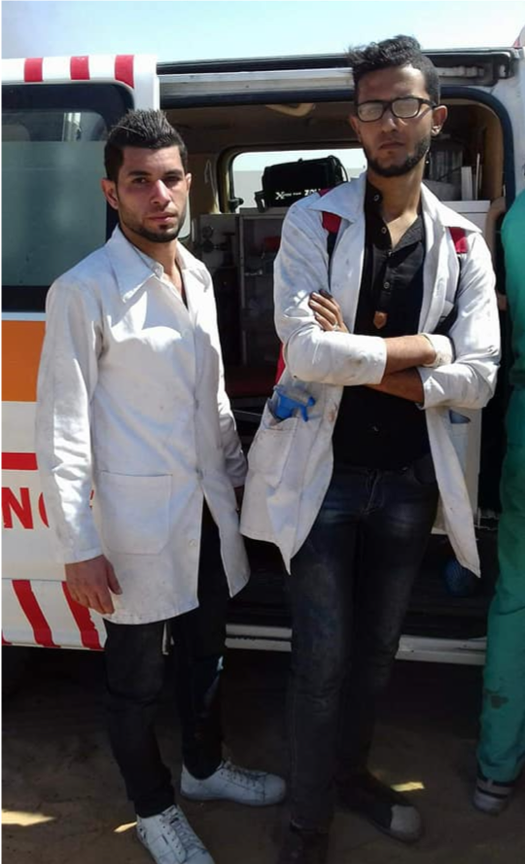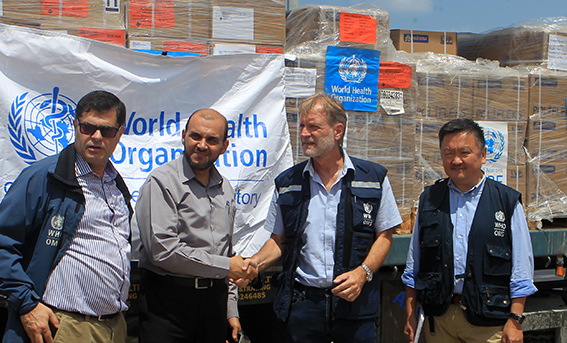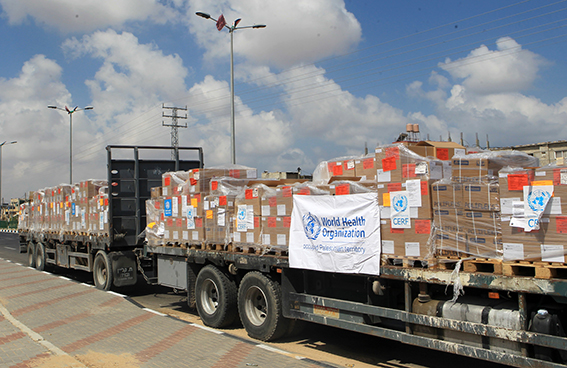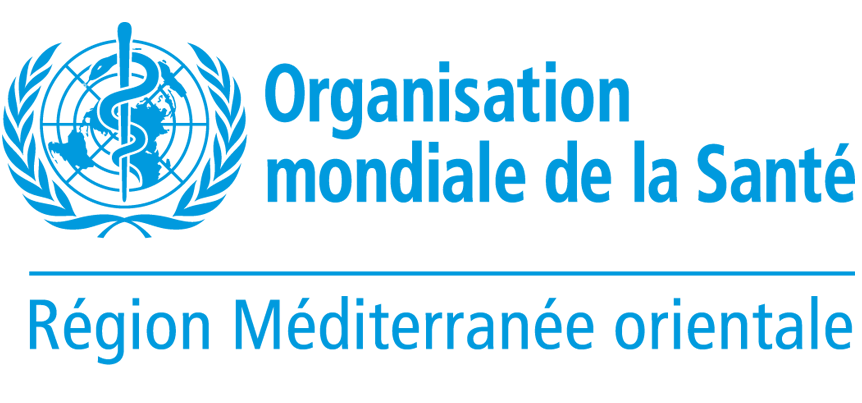We will keep coming to help as long as there are people who need us
 Rami is a 29-year-old volunteer first responder and mental health support worker. He is a refugee who grew up in Khan Yunis in the south of the Gaza Strip. Rami joined the Palestinian Medical Relief Society (PMRS) in March 2018 to assist as a first responder during demonstrations that have been taking place in Gaza for the right to return of Palestinian refugees and against the on-going blockade of the Gaza Strip.
Rami is a 29-year-old volunteer first responder and mental health support worker. He is a refugee who grew up in Khan Yunis in the south of the Gaza Strip. Rami joined the Palestinian Medical Relief Society (PMRS) in March 2018 to assist as a first responder during demonstrations that have been taking place in Gaza for the right to return of Palestinian refugees and against the on-going blockade of the Gaza Strip.
“We’re affected by too many wars and conflicts, so it’s critical to have people trained to provide immediate care for the injured.”
Rami has been injured three times during his volunteering as a first responder since the start of demonstrations on 30 March 2018. On one of these occasions, he was shot with live ammunition during an incident where his colleague Razan was killed. They were working together as part of a team of five.
“When we got close to some of those injured near the fence, the soldiers started firing at us with live bullets and gas. We retreated away from the fence and Rasha and Razan [two members of the team] fainted at that time from gas inhalation. Later, we stood away from the fence and Rasha suddenly noticed the soldiers had their weapons pointed at us. I moved just in time – I was shot in my left thigh and had a shrapnel wound in my right thigh and right hand, but it could have been a lot worse. Razan was shot in the chest. I didn’t see her after that because I was being treated, but I was told that she died half an hour later.
“We know the risks we face, but we also believe in the importance of our work and the need to provide good care for those who are injured. Still, nothing can prepare you for the psychological pain of losing a colleague and a friend like Razan. She was in such high spirits when she arrived to work on the day she died. She had a new phone and she wanted us to take selfies to put on social media.”
Rami continues to volunteer and provide care to those injured during the demonstrations every Friday, while working as a mental health support worker for PMRS in the week.
“We have all suffered but our work is bigger than our wounds. I went straight back the Friday after I was injured. I wasn’t able to work, but I wanted to show solidarity with my colleagues and to be with them after we lost Razan. We will keep coming to help as long as there are people who need us.”
World Health Day 2018: For me, it’s a duty that I feel to our patients and to Gaza
 Imad is 34 years old and has been volunteering as a first responder with the Palestinian Red Crescent Society (PRCS) since 2006. He is a refugee who grew up in Deir al-Balah in the Middle Area of the Gaza Strip. Imad volunteered with PRCS to help those injured in demonstrations, until he was injured on 9 April while working as a member of a PRCS team east of al Bureij refugee camp.
Imad is 34 years old and has been volunteering as a first responder with the Palestinian Red Crescent Society (PRCS) since 2006. He is a refugee who grew up in Deir al-Balah in the Middle Area of the Gaza Strip. Imad volunteered with PRCS to help those injured in demonstrations, until he was injured on 9 April while working as a member of a PRCS team east of al Bureij refugee camp.
“Just after 5 o’clock there was suddenly shooting from the barrier and I was hit in my right leg. We got out of the ambulance straight away and went to hide behind it [on the opposite side from the Gaza barrier]. At this point, the paramedics who were with me put a bandage on my leg to stop the bleeding and moved me to an ambulance and to take me to Al Aqsa Hospital in Deir Al-Balah. I was in Al Aqsa Hospital for about 30 minutes to receive first aid before they moved me to Al-Quds Hospital in Gaza City. From there they transferred me to Shifa Hospital. In Shifa I had surgery. Doctors told me that if I hadn’t been able to have this surgery I would have lost my leg.”
Imad reports that during his 10 years working with PRCS, the teams he has worked with have often been targeted and he himself previously sustained some minor injuries.
After initial surgery, Imad had further operations to remove the bullet and to receive a skin graft. He had to rest for 50 days after his surgery, which he found frustrating:
“It’s difficult to be limited in your movement when you are used to being active. I miss my work and volunteering, and I miss playing football.”
Imad has been receiving physiotherapy rehabilitation from Médicins Sans Frontières in Gaza. Now, despite some improvements, he still faces difficulties.
“My leg is better but I still suffer from pain and numbness and I can’t walk more than 500 metres. Worse is the fear. I’m afraid to go back in an ambulance and I’m afraid to go back to work in the field. As long as I’m unable to return to the field I’ll continue my work as a trainer in first aid and international humanitarian law for first responders. But I want to get better and go back to working with the ambulances. For me, it’s a duty that I feel to our patients and to Gaza.”
Related Links:
Third health worker killed in Gaza demonstrations: WHO reiterates calls for the protection of health workers, patients and health facilities
 Abdullah Al-Qutati (right) volunteering as a first responder to treat those injured during demonstrations east of Rafah11 August 2018, Gaza – On 10 August, Abdullah Al-Qutati, a first responder, was killed by Israeli forces while working to help those injured during protests east of Rafah in the south of the Gaza Strip. He is the third health worker to be killed since demonstrations began as part of the Great March of Return in Gaza on 30 March. WHO reiterates that the protection of health workers, patients and health facilities must be respected.
Abdullah Al-Qutati (right) volunteering as a first responder to treat those injured during demonstrations east of Rafah11 August 2018, Gaza – On 10 August, Abdullah Al-Qutati, a first responder, was killed by Israeli forces while working to help those injured during protests east of Rafah in the south of the Gaza Strip. He is the third health worker to be killed since demonstrations began as part of the Great March of Return in Gaza on 30 March. WHO reiterates that the protection of health workers, patients and health facilities must be respected.
Abdullah was 22 years old and grew up in Tal As-Sultan in the south of the Gaza Strip. He was in the final year of his psychology degree at Al Aqsa University in Gaza City, and from January 2018 had been volunteering with Nabd Al-Hayat (Life’s Pulse), a team providing first aid training as well as mental health and psychosocial support around Rafah. Since the start of the Great March of Return, Abdullah and the Nabd Al-Hayat team had been volunteering as first responders during the demonstrations, at the Ministry of Health medical point east of Rafah. First responders provide immediate treatment and evacuation for those injured. Abdullah liked to be photographed in his white coat, and his colleagues say he was proud of the work he was doing and the service he could offer to his community.
Abdullah was shot on 10 August while providing care to a 55-year-old man who had also just been hit by live ammunition. Abdullah was shot at approximately 18:25 and was pronounced dead at 18:46 after he had been taken to the European Gaza Hospital. The injured patient he was treating at the time, Ali Al-Alol, also later died.
On 10 August, initial reports indicate that there were at least 5 incidents of attacks on health with 5 health workers injured besides Abdullah, and an ambulance damaged. These attacks are in addition to the 203 recorded incidents against health staff and facilities from 30 March to 3 August, which affected 373 health workers (2 of whom had died), 59 health vehicles and 2 health facilities. Overall, 164 people have been killed and 17 566 injured since the start of the demonstrations on 30 March, including preliminary figures released by the Ministry of Health for 10 August.
Dr Gerald Rockenschaub, Head of WHO in the occupied Palestinian territory, stated: “Our thoughts are with Abdullah’s family, friends and colleagues at this difficult time. The protection of health workers, patients and health facilities must be respected in accordance with international humanitarian law. Health workers like Abdullah should be able to carry out their work without fear and without risking their lives.”
WHO delivers trauma kits to the Ministry of Health in Gaza, August 2018
 8 August, 2018, Gaza Strip –The World Health Organization (WHO) is delivering 36 trauma kits to the Ministry of Health that are urgently needed to ensure the wounded receive appropriate emergency treatment.
8 August, 2018, Gaza Strip –The World Health Organization (WHO) is delivering 36 trauma kits to the Ministry of Health that are urgently needed to ensure the wounded receive appropriate emergency treatment.
With resources from the United Nations Central Emergency Response Fund (CERF), WHO has delivered 18 trauma kits, which will be used to treat up to 1800 patients who are in need of surgical care. Each emergency trauma kit comprises 2 parts (A and B) and contains pharmaceuticals and disposable items to treat 100 trauma patients.
“The medical supplies procured by WHO will directly support the treatment of trauma casualties, enhance trauma management in 6 major hospitals to respond to the casualties in the Gaza Strip and reduce the trauma-related suffering of the wounded,” said Dr Gerald Rockenschaub, WHO’s Head of Office for the occupied Palestinian territory.
As of 6 August, according to the Ministry in Gaza, a cumulative total of 165 people have been killed and 17 557 people were injured by Israeli forces, since the mass demonstrations began in Gaza on 30 March 2018.
 The current surge in humanitarian health needs is happening in the context of a chronic and increasingly precarious humanitarian crisis. Medicines and disposable supplies in Gaza are being depleted. There is a shortage of health staff and fuel reserve to generate electricity, which is currently sustaining essential life-saving services through emergency generators in the 14 public hospitals. These will be depleted by the middle of August.
The current surge in humanitarian health needs is happening in the context of a chronic and increasingly precarious humanitarian crisis. Medicines and disposable supplies in Gaza are being depleted. There is a shortage of health staff and fuel reserve to generate electricity, which is currently sustaining essential life-saving services through emergency generators in the 14 public hospitals. These will be depleted by the middle of August.
“WHO continues to monitor the situation and to identify urgent life-saving health needs. Additional resources and funding are needed to sustain essential health services and to procure trauma and surgical supplies. WHO and health cluster partners urgently require US$ 17 million to respond to immediate priority needs in Gaza until the end of the year. Further funding will be needed for emergency preparedness and response over the comings weeks as the demonstrations and clashes continue,” said Dr Rockenschaub.








